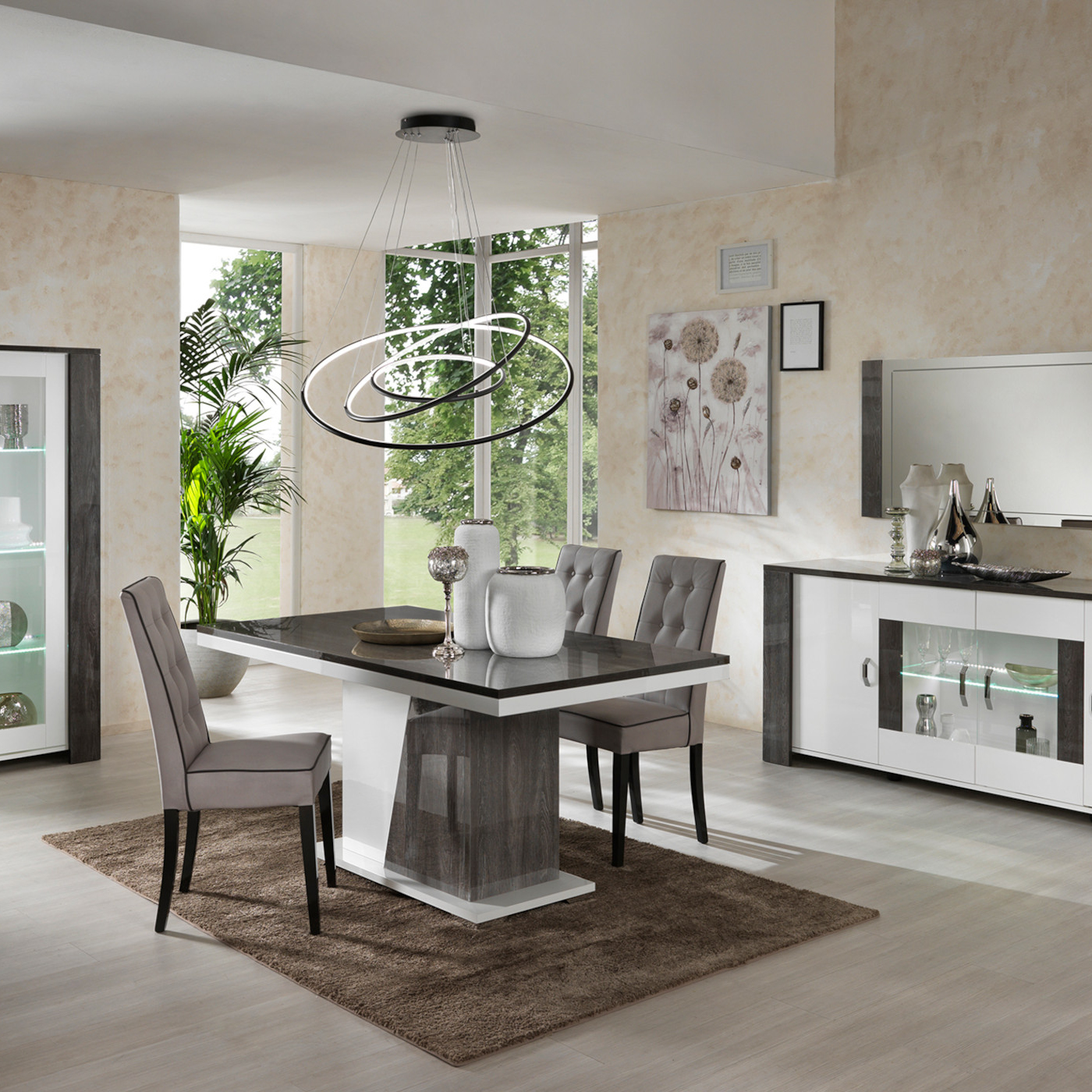Pendant lighting has become increasingly popular in dining rooms, and for good reason. These stylish and versatile fixtures can enhance the ambiance of any dining space, creating a warm and inviting atmosphere. Pendant lights are also a great way to highlight specific areas of the dining room, such as the dining table or a beautiful piece of artwork. In this article, we will explore the various ways pendant lights can transform your dining room and provide tips for selecting the perfect pendant light for your space.
How Pendant Lights Enhance the Ambiance of a Dining Room
One of the main reasons why lamolighting pendant lights are a popular choice for dining rooms is because they can create a warm and inviting atmosphere. The soft, diffused light that pendant lights emit can make any dining space feel cozy and intimate. Whether you’re hosting a dinner party or enjoying a family meal, pendant lights can set the mood and make your guests feel comfortable.
In addition to creating a cozy ambiance, pendant lights can also be used to highlight specific areas of the dining room. For example, if you have a beautiful dining table that you want to showcase, you can hang a pendant light directly above it to draw attention to this focal point. Pendant lights can also be used to highlight artwork or other decorative elements in the dining room, adding visual interest and depth to the space.
Choosing the Right Size and Style of Pendant Light for Your Dining Room
When selecting a pendant light for your dining room, it’s important to consider both the size and style of the fixture. The size of the pendant light should be proportionate to the size of your dining table and the height of your ceiling. As a general rule of thumb, the diameter of the pendant light should be about one-third to one-half the width of the dining table.
In terms of style, there are countless options to choose from. Whether you prefer a modern, minimalist design or a more traditional, ornate fixture, there is a pendant light out there to suit your taste. Consider the overall style of your dining room and choose a pendant light that complements the existing decor. For example, if you have a contemporary dining room with clean lines and neutral colors, a sleek and simple pendant light would be a great choice.
Popular Materials for Pendant Lights in Dining Rooms
Pendant lights come in a variety of materials, each with its own unique look and feel. Some of the most popular materials used for pendant lights in dining rooms include glass, metal, and natural materials like wood or rattan.
Glass pendant lights are a classic choice for dining rooms. They can range from clear glass to colored or frosted glass, depending on the desired effect. Glass pendant lights are versatile and can work well with a variety of decor styles.
Metal pendant lights are another popular option. They can be made from materials like brass, copper, or stainless steel, and can add a touch of elegance and sophistication to any dining room. Metal pendant lights are often used in more modern or industrial-style spaces.
Natural materials like wood or rattan can add warmth and texture to a dining room. These pendant lights are often used in more rustic or bohemian-inspired spaces. They can create a cozy and inviting atmosphere, perfect for family dinners or gatherings with friends.
Tips for Installing Pendant Lights in Your Dining Room
Installing pendant lights in your dining room can be a relatively simple process if you follow the right steps. Here is a step-by-step guide to help you install pendant lights in your dining room:
1. Turn off the power: Before you begin any electrical work, make sure to turn off the power to the area where you will be installing the pendant lights. This can usually be done by flipping the corresponding circuit breaker in your electrical panel.
2. Measure and mark: Measure the height at which you want to hang the pendant lights and mark the spot on the ceiling. Use a stud finder to locate any ceiling joists or beams that you can attach the pendant light mounting hardware to.
3. Install the mounting hardware: Depending on the type of pendant light you have, you may need to install a mounting bracket or a ceiling plate. Follow the manufacturer’s instructions to securely attach the mounting hardware to the ceiling.
4. Connect the wiring: Carefully follow the manufacturer’s instructions to connect the wiring of the pendant light to the existing electrical wiring in your ceiling. Make sure to use wire nuts to securely connect the wires and wrap them with electrical tape for added safety.
5. Hang the pendant light: Once the wiring is connected, carefully hang the pendant light from the mounting hardware. Make sure it is securely attached and level.
6. Test and adjust: Turn the power back on and test the pendant light to make sure it is working properly. If necessary, adjust the height or position of the pendant light to achieve your desired look.
It’s important to note that if you are not comfortable working with electrical wiring, it is best to hire a professional electrician to install your pendant lights for you. Safety should always be a top priority when working with electricity.
Pendant Lighting as a Statement Piece in Your Dining Room

Pendant lights can be used as a statement piece in your dining room, adding a touch of style and personality to the space. Whether you choose a bold and colorful pendant light or an intricate and eye-catching design, a statement pendant light can become the focal point of your dining room.
For example, if you have a minimalist dining room with neutral colors and clean lines, you could choose a large, geometric pendant light in a vibrant color to add visual interest and create a focal point. Alternatively, if you have a more traditional dining room with rich wood furniture and ornate details, you could choose a pendant light with intricate metalwork or a vintage-inspired design to complement the existing decor.
How Pendant Lights Can Complement Your Dining Room Decor
Pendant lights can be used to enhance your existing dining room decor and tie the space together. When selecting pendant lights, consider the overall style and color scheme of your dining room and choose fixtures that complement these elements.
For example, if you have a coastal-themed dining room with light blue walls and beach-inspired decor, you could choose pendant lights made from natural materials like rattan or seagrass to enhance the coastal vibe. Alternatively, if you have a modern dining room with sleek furniture and a monochromatic color scheme, you could choose pendant lights with clean lines and a minimalist design to complement the contemporary aesthetic.
It’s also important to consider the scale of the pendant lights in relation to the size of your dining room. If you have a small dining room, choosing oversized pendant lights may overwhelm the space. On the other hand, if you have a large dining room with high ceilings, choosing small pendant lights may get lost in the vastness of the room. Finding the right balance is key to creating a cohesive and visually pleasing dining room.
Energy-Efficient Options for Pendant Lighting in Your Dining Room
In today’s environmentally conscious world, energy-efficient lighting options are becoming increasingly popular. Fortunately, there are many energy-efficient pendant light options available that can help you reduce your carbon footprint and save on energy costs.
LED pendant lights are one of the most energy-efficient options on the market. LED bulbs use significantly less energy than traditional incandescent bulbs and can last up to 25 times longer. They also produce less heat, making them safer to use in enclosed spaces like dining rooms.
Another energy-efficient option is pendant lights with dimmable features. Dimmable pendant lights allow you to adjust the brightness of the fixture, allowing you to create the perfect ambiance for any occasion. By dimming the lights, you can save energy and extend the lifespan of the bulbs.
Maintenance and Cleaning Tips for Pendant Lights in Your Dining Room
To keep your pendant lights looking their best, it’s important to regularly clean and maintain them. Here are some tips to help you keep your pendant lights in top condition:
1. Turn off the power: Before cleaning your pendant lights, make sure to turn off the power to the area where they are located. This will ensure your safety while working with the fixtures.
2. Remove dust and debris: Use a soft, lint-free cloth or a feather duster to gently remove any dust or debris from the surface of the pendant lights. Avoid using abrasive materials or harsh chemicals, as these can damage the finish of the fixtures.
3. Clean glass shades: If your pendant lights have glass shades, you can use a glass cleaner or a mixture of mild dish soap and water to clean them. Spray the cleaner onto a soft cloth and gently wipe the glass shades, being careful not to apply too much pressure.
4. Clean metal or wood surfaces: For pendant lights with metal or wood surfaces, you can use a mild cleaner specifically designed for these materials. Apply the cleaner to a soft cloth and gently wipe the surfaces, following the grain of the wood or the direction of the metal.
5. Check for loose connections: While cleaning your pendant lights, take the opportunity to check for any loose connections or damaged wiring. If you notice any issues, it’s best to contact a professional electrician to make any necessary repairs.
Transforming Your Dining Room with a Stunning Pendant Light
In conclusion, pendant lights are a popular choice for dining rooms because they can enhance the ambiance of the space and create a warm and inviting atmosphere. By choosing the right size and style of pendant light, you can transform your dining room into a stylish and functional space. Pendant lights can also be used as a statement piece or to complement your existing decor, adding a touch of style and personality to the room. With the wide range of energy-efficient options available, pendant lights are not only aesthetically pleasing but also environmentally friendly. So why not consider adding a stunning pendant light to your dining room decor and enjoy the many benefits it has to offer?

